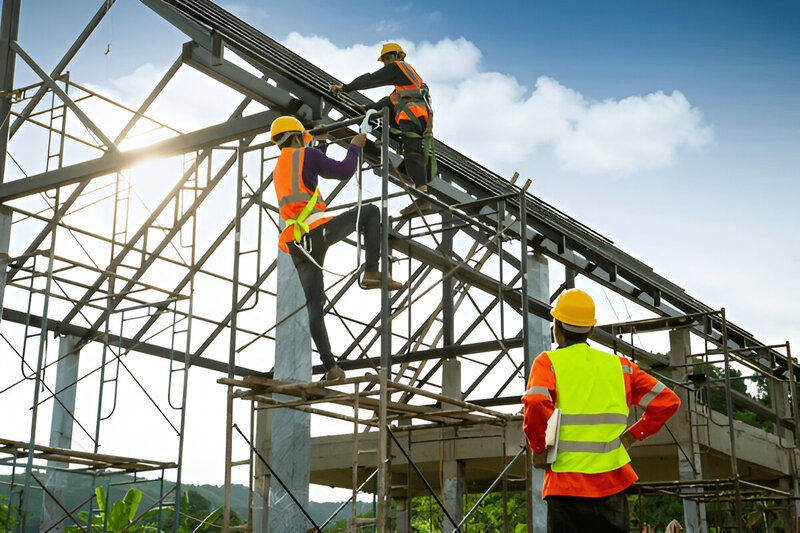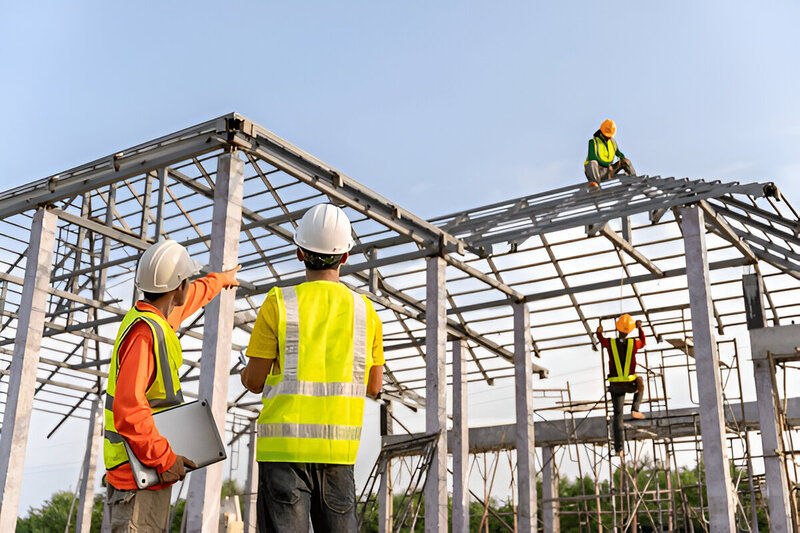How RIIWHS204E Work Safely at Heights Training Helps Prevent Falls
- Lara Buck
- Sep 24
- 4 min read

Falls from height maybe one of the most dangerous things to do for people working in the construction, maintenance, mining, and warehousing industries. Each year employers and employees bear the brunt of serious injury and death from falling from height. This hazard can best be reduced by enforcing strict safety standards on employers and employees alike. A central part of this training is the riiwhs204e work safely at heights training. Workers who have taken this training are equipped with essential knowledge and skills to work safely when performing tasks above ground level.
This article looks at how this training prevents falls, what topics it covers, and why it is relevant even in the modern workplace.
Importance of RIIWHS204E Work Safely at Heights Training
This training is nationally accepted in Australia as a competency unit that prepares workers to recognize hazards, use protective equipment, and observe safe work practices in elevated positions. Its essence is that it works toward reducing occurrences associated with falls from heights, one of the most common causes of workplace injuries. Training ensures that these workers learn not just technical skills in handling ladders, scaffolding, and fall protection equipment, but also how to assess risk prior to task commencement. The idea is to create a proactive approach to safety culture in the workplace.
Key Skills Taught in RIIWHS204E Work Safely at Heights Training
Workers that successfully complete the RIIWHS204E Work Safely at Heights training course acquire a range of critical safety skills, including:
Recognizing the Hazard: recognizing hazardous platforms; adverse weather; or unsafely functioning equipment.
Access to PPE: Proper examination and use of straps, lanyards, and other fall arrest systems.
First Aid and Emergency Management: The knowledge and prompt action in an emergency relating to accident and fall.
Safe Work Planning: Outlining a step-by-step plan for working in heights to minimize exposure to risks.
These skills are directly transferrable to enhance safe practice; hence, the workers feel confident while executing their tasks and maintain compliance with workplace health and safety laws.
How Training Prevents Falls
RIIWHS204E Training Work Safely at Heights aims to avoid accidents and injuries by preventing falls. It trains workers theoretically and practically, thereby allowing them to make sound decisions in high-risk settings.
Hazard Reduction: By teaching workers to recognize hazards and mitigate them, the training decreases the probability of something going wrong.
Equipment Handling: Most falls occur when equipment is misused. Training informs the worker on the proper equipment selection, use, and maintenance.
Standard Operating Procedure: Workers are taught to adhere to standard operating procedures, reducing human error during times of serious danger.
Confidence: By empowering the workers with knowledge and practice, fear and hesitation are banished, allowing them to complete the tasks efficiently and safely.
By this application of the training tools falls, and fall risk would be decreased substantially, to the benefit of both worker and employer.
RIIWHS204E Work Safely at Heights Training and Legal Duties

Safety in the workplace means a lot more than just protecting those that work-it is also about meeting the legal requirements. In Australia, there are stringent health and safety laws concerning working at heights, and employers have to abide by these laws. Not giving training would land the employer into heavy fines, lawsuits, or even criminal prosecution in case there is such an accident with serious incidences resulting.
By investing in training on RIIWHS204E Work Safely at Heights, organizations, therefore, not only comply with regulation but work toward a safer work culture. Employees who attain this certification are much more prepared to respond to the needs of today's work environments and therefore reduce the employer's liabilities.
Practical Operations Across Industries
The skills acquired through advanced techniques in RIIWHS204E Work Safely at Heights training find application across a range of industries. Some of these include:
Telecommunication – For workers installing towers and aerial lines.
Warehousing and Logistics – In accessing elevated storage systems.
Mining and Energy – For maintenance on rigs and heavy machinery.
Facility Maintenance – Roof repairs, painting, and cleaning activities at heights.
In every one of these sectors, the training aids practitioners in adopting set safe practices to ensure a coordinated effort toward workplace safety.
Overcoming Challenges Common in Working at Heights
Challenges usually arise while working at heights, despite training. The Training RIIWHS204E Work Safely at Heights tackles the world's related challenges with practical ways forward such as:
Weather Management: Workers learn to assess and accommodate for risks related to wind, rain, and heat, which might disturb stability.
Fatigue Management: Recognizing consequences of tiredness on balance and decision-making.
Team Communication: Establishing clear pathways of communication for all workers at the site, at various elevations.
Emergency Management: Ensuring everyone knows his role in a rescue.
These considerations minimize the occurrence of mistakes and hence increases safety at every level.
Benefits of Training Completions in Long-Term
The workers who undergo riiwhs204e work safely at heights training have the present advantage of knowledge on safety concerning heights but also the future benefit in their careers:
Employability increased: In some construction-related jobs, one might find that the position necessitates certification.
Increased Confidence: Employees now know that as per their capabilities, it is safe to perform their duties from above other floors, which means less anxiety and less likelihood of making mistakes.
Trusted by Employer: Certified employees cultivate trust because they take safety seriously in the workplace.
Reduced Injuries Equals Reduced Costs: Lesser the accidents, fewer the insurance claims and disruption of work.
Investing in the above training will therefore benefit both the worker and his employer.
Conclusion
Falls from heights remain a big killer in all industries, but with good training, they can be reduced considerably. The riiwhs204e work safely at heights training remains one of the critical courses to prepare workers for the rigors of working at an elevation. This course provides the necessary building blocks that combine technical adequacy, hazard awareness, and compliance knowledge, thus granting workers to carry out their duties in confidence, care, and competence.
The training is not just a requirement for industries that work at heights; it is a commitment to safeguarding lives. By embracing this competence, organizations enhance safe workplaces and avoid preventing highly costly accidents and fostering a culture that cherishes safety above everything else.
Comments